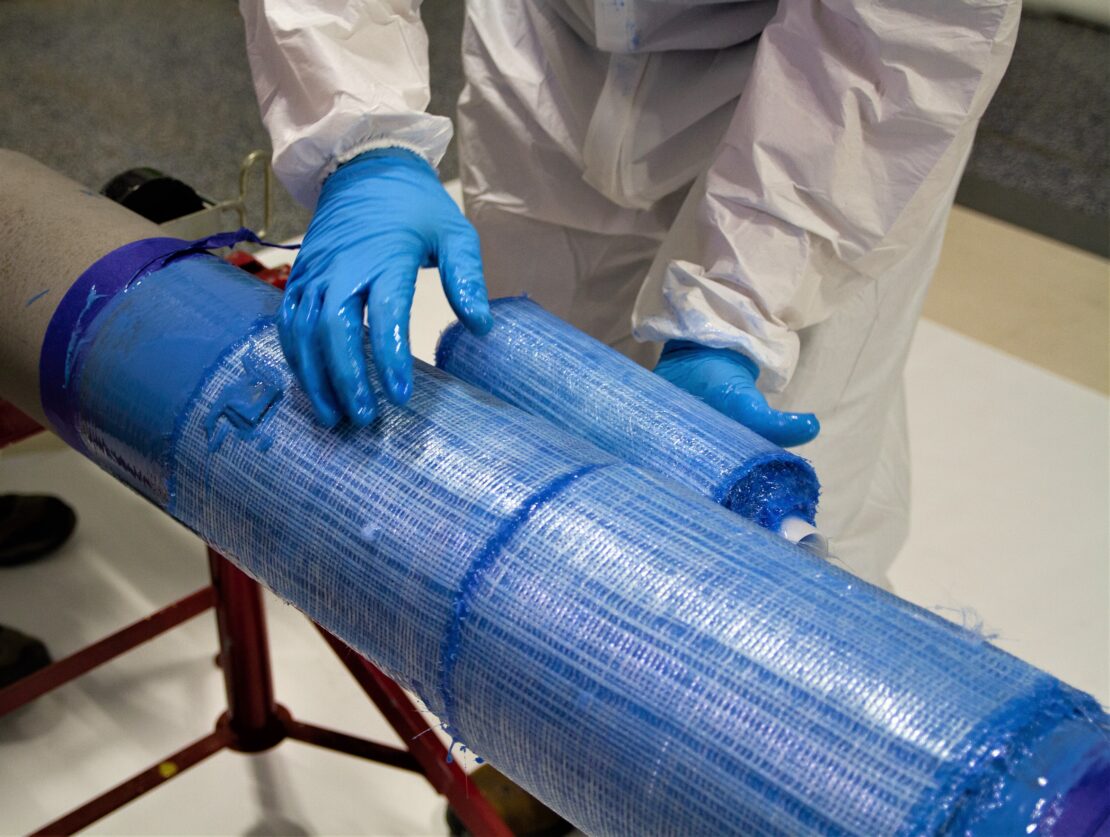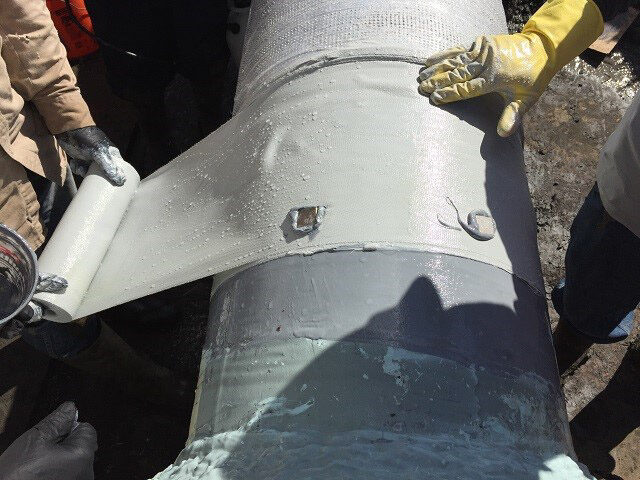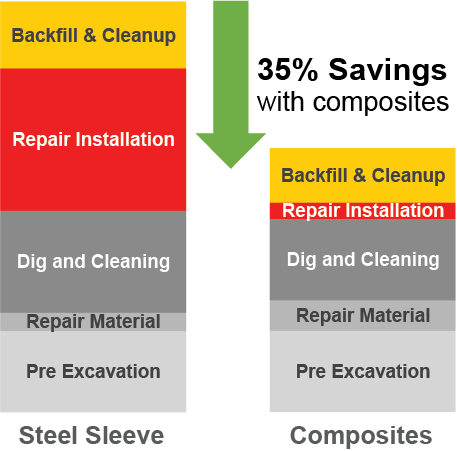Composite repairs and steel sleeves are both acceptable methods that address pipeline defects, but they have different advantages and disadvantages. Here are some benefits of pipeline composite repair over steel sleeves:
Flexibility and Conformity
Composite repair systems are typically made from flexible materials that can conform to the shape of the pipe, including complex geometries and irregularities such as wrinkle bends. This flexibility allows for a better fit and coverage over the damaged area compared to rigid steel sleeves, which might encounter difficulty adapting to the pipe ovality and non-uniform shapes.
Weight and Space
Composite repairs are lightweight compared to steel sleeves, which means they add less weight loading to the pipeline. This can be crucial in cases where the pipeline is situated in areas with geohazards or lack of pipeline support, adding more risk to a pipeline with a heavy steel sleeve.
Safer
Composite repairs do not require welding. Steel sleeves, on the other hand, require welding. Welding is a leading cause of reportable incidents and is a safety hazard. Welding also requires more qualified personnel on-site.
No Landing Zone Restrictions
Due to laminations, inclusions, stringers, or corrosion it can be difficult to find a clean landing zone for installing Type B steel sleeves. Composites can land on non-injurious defects with no issues, often shortening the needed repair length and reducing ditch length.

Corrosion Resistance
Composite materials are inherently resistant to corrosion, which is a common issue in pipelines. Steel sleeves, on the other hand, might still be susceptible to corrosion over time, especially if they are not adequately protected or maintained.
Thin Wall Pipeline Installation
Type B steel sleeves present burn-through risk while welding on thin-wall pipelines. Composite repairs are a cold work technology and therefore can be installed on pipelines with thin wall <0.15”.
Ease of Inspection
Composite repairs can be designed to allow for easier inspection of the underlying pipeline through methods like ultrasonic testing. This might be more challenging with steel sleeves, where the sleeve itself can mask the defect for future ILI runs.

Custom Solutions - Minimal Stocking
Composite repair systems can be tailored to the specific needs of the pipeline, including the size and shape of the repair area. For example, one roll of composite material can be used on multiple diameters, wall thicknesses, and defect types, allowing for flexible inventory and rapid repair mobilization.
Minimal Disruption
Composite repairs can be applied while the pipeline is still in operation, minimizing the need for shutdowns and reducing production losses. Steel sleeves, on the other hand, require welding and may dictate lower pressure or a pressure that is unattainable by operations during welding of the sleeve into place, which can be more disruptive to the pipeline's operation.

Ease of Installation
Composite repair systems often involve a simpler and quicker installation process compared to steel sleeves. They can be applied without extensive welding or cutting, reducing downtime and labor costs.
Cost-Effectiveness
Depending on the circumstances, composite repairs can often be more cost-effective than installing steel sleeves. The reduced installation time, labor, and equipment costs can contribute to overall savings. On average, the total dig time for Type B sleeves is between 2.5 to 13 days compared to 1 to 7 days for composite repairs. Imagine the savings composites can bring to your integrity program over the course of one year!

